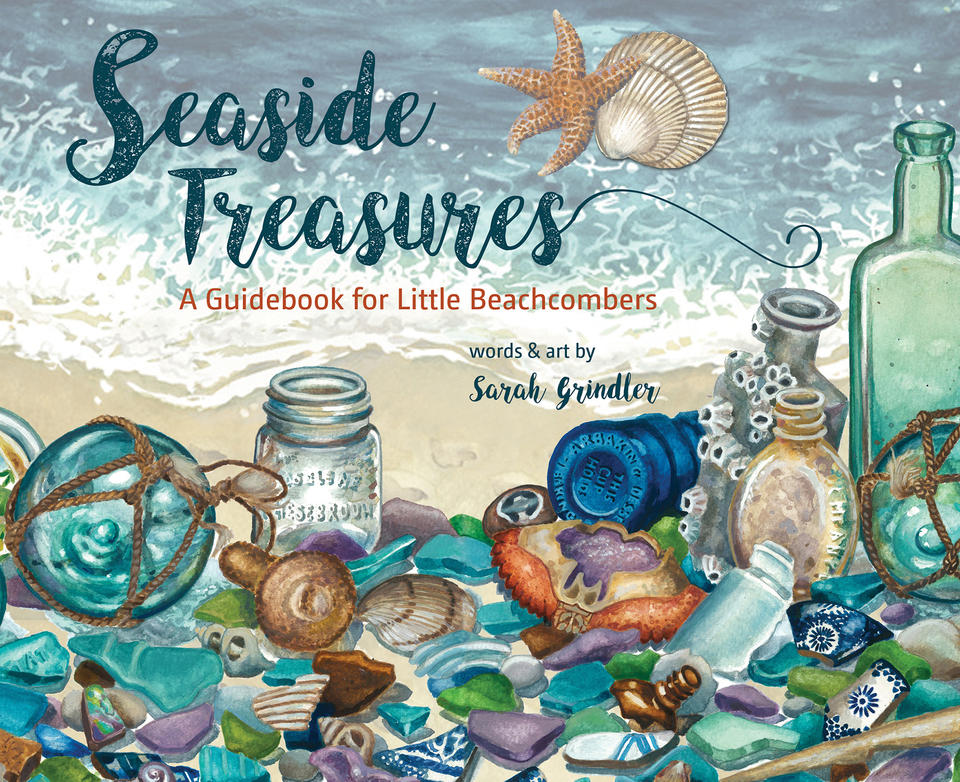April 12, 2019
Seaside Treasures, by Sarah Grindler

This week has been aggravating for all kinds of reasons, macro and micro, and not least among the troubles is that people kept waking me up at 4am, and thereafter I’d lie awake in bed taking inventory of all the items that are weighing on my mind, which is no way to fall back to sleep, I tell you. So finally I came up with a plan, the night after I first read Seaside Treasures, by Sarah Grindler. My worries, I imagined, put away in a drawstring bag in the place where I was in my mind, which was the beach at Humber Bay Shores, a beach where the beach glass tends to be yellow, which fascinates me because out in the east end of the city it’s mostly green, and I wonder why the distinction. I would leave the bag behind me as I went to explore the beach instead, picking up mussel shells, slate perfect for skipping, round stones to hurl, and others with stripes to admire, the sun sparkling on the surface.
It’s possible I’m just dreaming of summer anyway, mid-April with snowflakes, but Seaside Treasures is a portal to there, and I love it so much. We’re beach treasure enthusiasts in our family, collectors of two glass jars of beach glass so far (and counting), with purple being ever elusive, but the odd fragment of painted china has made up for it in the meantime. And even though our beach is not a seaside, instead by a lake (but still, a GREAT lake) and we will never find a sand dollar or an urchin shell, this book is still right up our street, and makes us excited and inspired to go exploring local beaches again.
Grindler’s realistic painted illustrations are beautiful, a different hue for every page—blue sea glass, then purple—both rare. “Other hard-to-find sea glass colours are red, orange, and yellow You can find pieces of green, brown, and white glass more easily. What is your favourite colour of sea glass?” she asks, in text as engaging as the pictures are. She shows glass fishing floats, arrowheads from the Indigenous people who lived on these lands long before we did, seashells, and also pieces of china. “Do you wonder who might have used them? Perhaps sailors, merchants, or pirates!”
And then there’s garbage, which washes up among the rest of it, which led to a really interesting discussion (and a general consensus that cigarette butts are disgusting). Isn’t it funny that some garbage gets to be treasure and other isn’t? A marble on the beach is treasure indeed, but what about the toy car with its wheels missing? Grindler writes, “When I find garbage, I collect it to help keep our oceans and beaches clean.”
The final spreads invite the reader to search specific objects on a crowded page of beachy treasures, and then to imagine what kinds of art and objects could be made from these objects as well. Ending with a question: “What will you find?”
(Hopefully serenity.)






Oh yes, and we’ll all be blessed if we find that serenity.
I am still looking for it!